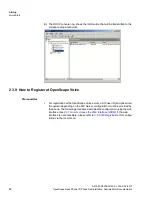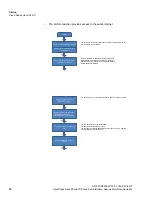
Administration
A31003-D3000-M100-01-76A9, 02-2013
44
OpenScape Desk Phone IP, Phone Administration, Administrator Documentation
LAN Settings
In a layer 1 VLAN, the ports of a VLAN-aware switch are assigned to a VLAN stati-
cally. The switch only forwards traffic to a particular port if that port is a member
of the VLAN that the traffic is allocated to. Any device connected to a VLAN-
assigned port is automatically a member of this VLAN, without being a VLAN
aware device itself. If two or more network clients are connected to one port, they
cannot be assigned to different VLANs. When a network client is moving from one
switch to another, the switches’ ports have to be updated accordingly by hand.
With a layer 2 VLAN, the assignment of VLANs to network clients is realized by
the MAC addresses of the network devices. In some environments, the mapping
of VLANs and MAC addresses can be stored and managed by a central
database. Alternatively, the VLAN ID, which defines the VLAN whereof the device
is a member, can be assigned directly to the device, e. g. by DHCP. The task of
determining the VLAN for which an Ethernet packet is destined is carried out by
VLAN tags within each Ethernet frame. As the MAC addresses are (more or less)
wired to the devices, mobility does not require any administrator action, as
opposed to layer 1 VLAN.
It is important that every switch connected to a PC is VLAN-capable. This is also
true for the integrated switch of the OpenScape Desk Phone. The phone must be
configured as a VLAN aware endpoint if the phone itself is a member of the voice
VLAN, and the PC connected to the phone’s PC port is a member of the data
VLAN.
There are 3 ways for configuring the VLAN ID of the phone port:
•
By LLDP-MED
•
By DHCP
•
Manually
Related Topics
3.2.2.1 Automatic VLAN discovery using LLDP-MED
The VLAN ID can be configured by the network switch using LLDP-MED (Link
Layer Discovery Protocol-Media Endpoint Discovery). If this option is selected
then the switch has to provide an appropriate TLV (Type-Length-Value) element
containing the VLAN ID. If no appropriate TLV is received, DHCP will be used for
VLAN discovery.
Administration via WBM
Network > General IP configuration
















































